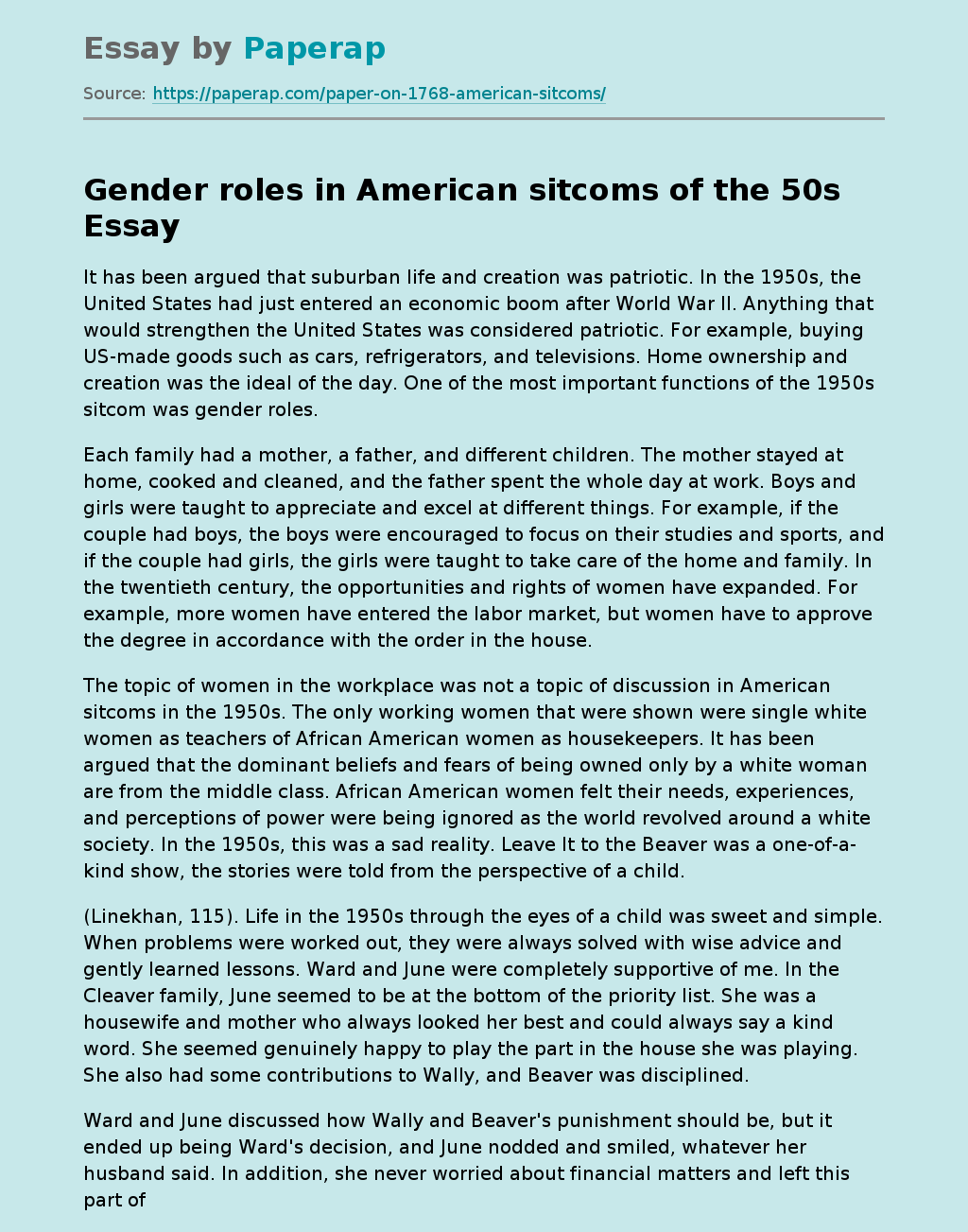Gender roles in American sitcoms of the 50s
It has been argued that suburban life and creation was patriotic. In the 1950s, the United States had just entered an economic boom after World War II. Anything that would strengthen the United States was considered patriotic. For example, buying US-made goods such as cars, refrigerators, and televisions. Home ownership and creation was the ideal of the day. One of the most important functions of the 1950s sitcom was gender roles.
Each family had a mother, a father, and different children.
The mother stayed at home, cooked and cleaned, and the father spent the whole day at work. Boys and girls were taught to appreciate and excel at different things. For example, if the couple had boys, the boys were encouraged to focus on their studies and sports, and if the couple had girls, the girls were taught to take care of the home and family. In the twentieth century, the opportunities and rights of women have expanded. For example, more women have entered the labor market, but women have to approve the degree in accordance with the order in the house.
The topic of women in the workplace was not a topic of discussion in American sitcoms in the 1950s. The only working women that were shown were single white women as teachers of African American women as housekeepers. It has been argued that the dominant beliefs and fears of being owned only by a white woman are from the middle class. African American women felt their needs, experiences, and perceptions of power were being ignored as the world revolved around a white society.
In the 1950s, this was a sad reality. Leave It to the Beaver was a one-of-a-kind show, the stories were told from the perspective of a child.
(Linekhan, 115). Life in the 1950s through the eyes of a child was sweet and simple. When problems were worked out, they were always solved with wise advice and gently learned lessons. Ward and June were completely supportive of me. In the Cleaver family, June seemed to be at the bottom of the priority list. She was a housewife and mother who always looked her best and could always say a kind word. She seemed genuinely happy to play the part in the house she was playing. She also had some contributions to Wally, and Beaver was disciplined.
Ward and June discussed how Wally and Beaver’s punishment should be, but it ended up being Ward’s decision, and June nodded and smiled, whatever her husband said. In addition, she never worried about financial matters and left this part of the house to Ward. The sitcoms were the outlet for society. They presented humorous situations that always had a happy ending. These comedic situations often reflect the real concerns of the day. Anyone watching sitcoms can enjoy humor while relieving the stress of everyday life.
The Cleavers were the quintessential American family that lived up to the traditional American dream. Gender roles and dynamics of child development. the woman was a housewife and mother, and the man was a working husband and father, and with them were happy children and they lived a quiet, happy life. This is what every American wants – happiness. Television should be an escape from reality; people can leave their possibly bleak life for a moment and enter a world where everything is going well. This is what Leave the Beaver gave its audience – sheer happiness.
Gender roles in American sitcoms of the 50s. (2019, Dec 05). Retrieved from https://paperap.com/paper-on-1768-american-sitcoms/

